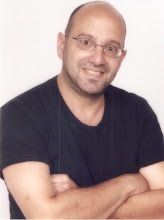[posted 2/15/11 to http://wrestlingbabylon.wordpress.com]
Yesterday I reviewed the story of how Shawn Michaels very possibly – if no doubt inadvertently – sent his World Wrestling Entertainment protégé Lance Cade on the course of early death with the “punishment” chair beatdown on Raw in October 2008. (“WWE Hall of Famer Shawn Michaels Should Speak Up on What Happened to Lance Cade,” http://wrestlingbabylon.wordpress.com/2011/02/14/wwe-hall-of-famer-shawn-michaels-should-speak-up-on-what-happened-to-lance-cade/.)
Now here’s why this is important beyond the hook of Michaels’ WWE Hall of Fame induction this spring.
Earlier I told of how Dr. Bennet Omalu, the discoverer of chronic traumatic encephalopathy, met resistance in publishing the third finding of CTE in a National Football League player. Omalu’s studies of Mike Webster and Terry Long were published in the journal Neurosurgery, but his proposed article on a third case, Andre Waters, was initially nitpicked to distraction in peer review. The reason is that in scientific circles, it’s that No. 3 that turns a medical pathology from an anomaly to an irrefutable pattern.
In pro wrestling, Lance Cade (real name Lance McNaught) could be that No. 3. (No. 1 was Chris Benoit. No. 2 was Andrew “Test” Martin.)
When Lance died in August 2010 at age 29 – in the middle of Linda McMahon’s Senate campaign in Connecticut – I believe that overtures were made to the McNaught family to donate his brain for CTE research. But it didn’t happen, although Harley McNaught, Lance’s father, did go public with his anger over McMahon’s callous comments about her dead wrestler having been another “addict” whom she “might have met once.”
But the story doesn’t have to end there. According to experts I’ve consulted, coroners often preserve for some time the brain tissue of the corpses they examined. If the coroner in San Antonio did so in Lance’s case, then the tissue still could be turned over to either of the two main research groups looking for evidence of CTE-indicative tau protein accumulations in the brains of dead athletes who participated in contact sports.
I hope Harley McNaught is within earshot of this post, and I hope he will understand that it is not too late to take that step. The pain Mr. McNaught and his family have endured over the last six months is unimaginable. Our children are supposed to bury us, not the other way around. But if Lance indeed had CTE (and only expert pathologists could make a certain determination), then sharing that information with the world could help give his career and life a positive legacy.
Irv Muchnick
Subscribe to:
Post Comments (Atom)

No comments:
Post a Comment